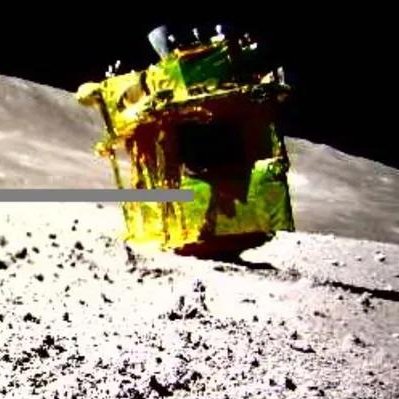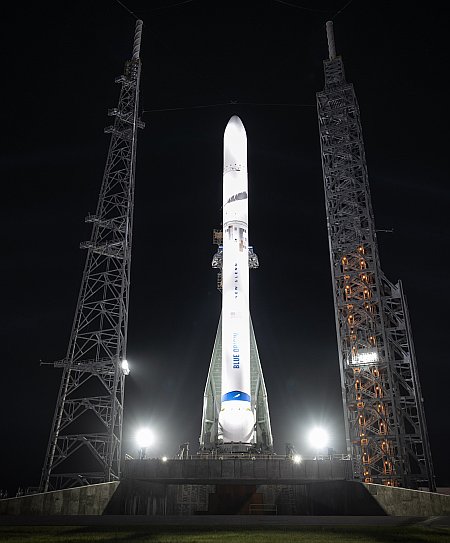Spanky & Our Gang – Sunday Will Never Be The Same
An evening pause: Performed live on the Ed Sullivan Show in 1967. The costumes scream the late sixties.
Hat tip Diane Zimmerman.
An evening pause: Performed live on the Ed Sullivan Show in 1967. The costumes scream the late sixties.
Hat tip Diane Zimmerman.
Actually, the “gold” in the quote refers less to the actual element and more to the potential wealth lurking within the resources available in many asteroids in space. I base this optimistic assessment, which is looking at the very long term and not the near future, based on the following chart, just published in a new white paper report [pdf] dubbed “Asteroid Mining: Key to Large-Scale Space Migration or Rocky Road?” The chart itself comes from this October 2023 research paper.

Except for gold, the estimated abundances in metallic asteroids of all these important minerals exceeds the entire reserves contained on Earth, by many times. And even though the asteroid reserves of gold do not exceed that of Earth, that in-space gold is likely far easier to access and mine. As the report notes:
» Read more
Rocket Lab continues to expand its product line beyond just rockets, today unveiling a family of four different types of service modules, designed to provide maneuvering, communications, and power to satellites.
The four service modules, dubbed Photon, Lightning, Pioneer, and Explorer, are each designed to serve different types of satellites, from low orbit to geosynchronous. The company is also developing a larger rocket, Neutron, in addition to its Electron rocket.
Presently only Electron and Photon are operational, both having serviced multiple customers. Neutron is still scheduled for a first launch later this year, though a delay into 2025 is expected. It is not clear when Lightning, Pioneer, and Explorer will make their first flights.
Link here. After two separate but aborted dress rehearsal countdowns, the rocket has been destacked with Superheavy rolled back to the assembly building.
After two Wet Dress Rehearsal (WDR) aborts, SpaceX opted to destack Ship 28 before removing Booster 10 from the Orbital Launch Mount (OLM). The Booster has since rolled back to the Production Site, while Ship 28 conducted standalone testing on Pad B, opening with a Spin Prime test on Monday.
A March launch of Flight 3 for Starship is still possible, pending the completion of full stack testing and approval from the FAA.
While the aborts suggest some technical issues occurred that need addressing, the destacking and additional work could also be for other reasons. The FAA has still not issued a launch license, and is demanding certain actions before doing so. It could be that the company is being forced to make certain upgrades on these prototypes it would have rather left to the next test launch with more advanced prototypes.
Either way, it now appears that a March launch is possibly threatened.
The two founders of the startup Astra have now slashed their offer price from $1.50 to $0.50 per share to buy the company and take it private.
Kemp and London cited several reasons for cutting the share price. They included continued cash burn by the company since they tendered the original offer and higher “non-operating expenses” as the company used multiple third-party advisers to assess options. They also said the special committee, as well as customers and investors, sought a plan that ensured a sufficient cash balance to support company operations once the deal closed.
It appears that they are willing to let the company go into bankrupty rather than pay their original offer. The new offer of $0.50 per share however remains significantly below the present trading price of about $1.76.
ULA has begun to assemble the Atlas-5 rocket that will hopefully launch Boeing’s Starliner capsule on its first manned mission to ISS, presently targeting a late April lift-off.
The rocket’s main stage was transferred from the nearby Advanced Spaceflight Operations Center to the integration facility Wednesday, Feb. 21, where it will await integration with the rocket’s upper Centaur stage and Starliner. The spacecraft will carry NASA astronauts Suni Williams and Butch Wilmore to the orbiting laboratory for a short stay of about one to two weeks before returning to a landing site in the southwest United States.
The late April date appears to be a slight delay from previous announcements.
On February 26, 2024 Northrop Grumman issued a required notice to its employees at its facility at Redondo Beach, California, that a major layoff of about a thousand employees, about 14% of its workforce at this location, is upcoming.
No reason was given for the cuts, nor did the notice indicate what divisions at the facility would be most affected. However, the cancellation only two weeks ago of a $733 million satellite contract with the Space Force — due to scheduling issues and budget overages — is likely a factor. In addition, the cost overruns in building the habitable module for NASA’s Lunar Gateway space station probably also contributed.
The company has also had problems with its Antares rocket, which relied on Russian engines and a Ukrainian-built first stage. It is presently grounded while Firefly designs and constructs a new American-built first stage. Northrop has had to also spend extra money to buy launch services from SpaceX to get its Cygnus cargo capsule to ISS.
It appears that the improvised switch to a NASA range finder instrument just before landing only partly worked during Odysseus’s landing attempt on the Moon, causing the spacecraft to hit the ground at too great a speed with too much laterial motion, resulting in the snapping of one leg and the lander tipping over.
Apparently, Odysseus could no longer process altitude data from the NASA instrument once it was within 15 kilometers of the surface. It had to rely on its optical cameras, a poor substitute.
By comparing imagery data frame by frame, the flight computer could determine how fast it was moving relative to the lunar surface. Knowing its initial velocity and altitude prior to initiating powered descent and using data from the inertial measurement unit (IMU) on board Odysseus, it could get a rough idea of altitude. But that only went so far. “So we’re coming down to our landing site with no altimeter,” Altemus said.
Unfortunately, as it neared the lunar surface, the lander believed it was about 100 meters higher relative to the Moon than it actually was. So instead of touching down with a vertical velocity of just 1 meter per second and no lateral movement, Odysseus was coming down three times faster and with a lateral speed of 2 meters per second.
Though the spacecraft landed upright, the high speed and sideways motion caused one leg to snap, and the spacecraft then fell over. In this sideways position Odysseus’ main solar panel could not get enough sunlight, forcing the mission to end prematurely.
A final press conference summing up the mission is scheduled for 2 pm (Eastern) today.
Was the mission a success? The failures and problems during touchdown illustrated engineering and management issues that must be addressed before the next flight. At the same time, the mission’s number one goal was to soft land on the Moon, and it did do so, even with those serious engineering problems.
More important, this flight’s first and foremost goal was an engineering test of that technology. In this sense that mission succeeded brilliantly, revealing those last technical issues.
An evening pause: Makes a nice contrast with yesterday’s evening pause.
Hat tip Robert Pratt of Pratt on Texas.
The FAA yesterday announced that it has completed its review of SpaceX’s investigation of the November Starship/Superheavy test launch and has approved the company’s conclusions.
The Federal Aviation Administration has concluded its review of SpaceX’s investigation of the second Starship launch in November, with the regulator saying Monday that it accepted the “root causes and 17 corrective actions” identified by the company.
While this means the investigation is now closed, SpaceX must implement all the corrective actions and apply for a modified launch license before it can fly Starship again. “The FAA is evaluating SpaceX’s license modification request and expects SpaceX to submit additional required information before a final determination can be made,” the regulator said in a statement Monday.
You can read a SpaceX update of its investigation here. As previously reported, when Starship vented the extra oxygen carried to better simulate a payload it caused “a combustion event” and fires that cut off communications.
This resulted in a commanded shut down of all six engines prior to completion of the ascent burn, followed by the Autonomous Flight Safety System detecting a mission rule violation and activating the flight termination system, leading to vehicle breakup. The flight test’s conclusion came when the spacecraft was as at an altitude of ~150 km and a velocity of ~24,000 km/h, becoming the first Starship to reach outer space.
Despite SpaceX’s report, which states the company “has implemented hardware changes” to prevent a reoccurance, the FAA has still not yet issued a launch license. Based on these updates and Elon Musk’s own prediction, it appears a license will be forthcoming in the next two weeks, matching my December prediction of a March launch. Expect SpaceX to quickly launch, as it has “more Starships ready to fly,” and it wants to fly them fast in order to refine the engineering so as to move to operational flights.
It is also possible that the FAA will continue to slow-walk its approvals, and SpaceX might be left hanging for more than two weeks. Had the government not been involved, all signs suggested that SpaceX would have done its third test flight in January, and would have now been gearing up for its fourth flight. That was the kind of pace SpaceX set when it was doing its first Starship test flights during the Trump administration. The government under Joe Biden’s presidency however is not allowing that kind of launch pace.

The Japanese lander SLIM, on its side.
Click for original image.
In the past four years a number of different companies and nations have attempted eight times to soft land an unmanned lander on the Moon. Sadly, the track record of this new wave of lunar exploration, the first since the 1960s space race, has not been good, and might possibly suggest some basic fundamental design errors, based not so much on engineering but on our modern culture and management. To review:
Of these eight attempts, only one mission has been entirely successful, India’s second. Of the seven others, five crashed or failed before even reaching the Moon, while two managed to soft land but with significant problems.
» Read more

Map by Michael Zeiler (GreatAmericanEclipse.com). Click for original.
On April 8, 2024 a large swath of the United States, from Texas to Maine, will have the opportunity to witness personally a total eclipse of the Sun by the Moon.
If you have never experienced a total eclipse, then you must do whatever you can to see this event, since the next eclipse within the United States will not happen again until 2044. Diane and I made a special trip to Idaho Falls, Idaho in 2017 to see that eclipse, and without doubt it was an experience that is difficult to describe. As I wrote afterward:
Totality was amazing. I was amazed by two things. First, how quiet it became. There were about hundred people scattered about the hotel lawn, with dogs and kids playing around. The hotel manager’s husband set up speakers for music and to make announcements, but when totality arrived he played nothing. People stopped talking. A hush fell over everything. Moreover, I think we somehow imagine a subconscious roar from the full sun. Covered as it was, with its soft corona gleaming gently around it, it suddenly seemed still.
Secondly, the amazing unlikeliness of the Moon being at just the right distance and size to periodically cause this event seemed almost miraculous. Watching it happen drove this point home to me. And since eclipses themselves have been a critical event in the intellectual development of humanity, helping to drive learning and our understanding of the universe, it truly makes me wonder at the majesty of it. I do not believe in any particular religion or their rituals (though I consider the Bible, the Old Testament especially, to be a very good manual for creating a good life and society), but I do not deny the existence of a higher power. Something made this place, and set it up in this wonderous way. Today’s eclipse only served to demonstrate this fact to me again.
China’s state-run press today announced that the country will attempt 100 launches in 2024, a number that includes launches from official government space agencies as well as a number of pseudo-companies that are supervised closely by that government.
This prediction now gives us a reasonably complete list of predictions from all the major players in the international launch market. Adding them all together, that market is predicting it will complete 366 launches in 2024, a number that would be 58% higher than the record set last year of 213 successful launches in a single year.
Will it happen? Not likely. Every one of those players routinely overstates its goals from year to year. For example, Russia’s numbers are always vastly high, with this year predicting 40 launches, a number that country hasn’t achieved in almost three decades.
At the same time, both China and SpaceX, the biggest players in this market, have been very good in recent years of predicting their output, only slightly missing their stated goals.
Based on these facts, it remains distinctly possible that the world’s global rocket industry will complete more than 300 successful launches in 2024, a number that is more three times higher than the average number of launches per year from the dawn of the space age in 1957 through 2021.

Click for original LRO image of Odysseus
Scientists using Lunar Reconnaissance Orbiter (LRO) this weekend located and photographed Intuitive Machines’ Odysseus Nova-C lunar lander at a height of 56 miles during its first orbit over the site.
The inset in the map to the right shows the lander, with the white dot marking its landing site, several miles to the south of the planned landing site, as indicated by the yellow dot.
Odysseus came to rest at 80.13 degrees south latitude, 1.44 degrees east longitude, 8,461 feet (2,579 meters) elevation, within a degraded one-kilometer diameter crater where the local terrain is sloped at 12 degrees.
That slope could by itself explain why the lander tipped over and ended up on its side. First, it landed faster than planned. Second, Intuitive Machines designed this Nova-C lander with a relatively tall configuration, which gives it a high center of gravity. Hitting the ground fast and on such a slope could easily have been enough for momentum to tilt it over after touchdown.
SpaceX today successfully launched another 24 Starlink satellites, its Falcon 9 rocket lifting off from Cape Canaveral.
The first stage completed its thirteenth flight, landing on a drone ship in the Atlantic.
The leaders in the 2024 launch race:
18 SpaceX
9 China
2 Iran
2 India
2 Rocket Lab
2 Japan
2 Russia
American private enterprise now leads the entire world combined 21 to 17 in successful launches, while SpaceX by itself now leads the the rest of the world (excluding other American companies) 18 to 17.
It appears the reason communications with Intuitive Machines’ Odysseus lunar lander has been so difficult since its landing yesterdary is that something caused it to fall over so that it is now lying on its side, blocking some of its antennas.
Intuitive Machines initially believed its six-footed lander, Odysseus, was upright after Thursday’s touchdown. But CEO Steve Altemus said Friday the craft “caught a foot in the surface,” falling onto its side and, quite possibly, leaning against a rock. He said it was coming in too fast and may have snapped a leg. “So far, we have quite a bit of operational capability even though we’re tipped over,” he told reporters.
But some antennas were pointed toward the surface, limiting flight controllers’ ability to get data down, Altemus said. The antennas were stationed high on the 14-foot (4.3-meter) lander to facilitate communications at the hilly, cratered and shadowed south polar region.
Its exact location also appears to be several miles from its intended landing site next to the crater Malapart A. Scientists who operate Lunar Reconnaissance Orbiter (LRO) hope orbital images this weekend will identify the spacecraft’s precise location.
The company also revealed that the reason its own laser guidance system would not function — requiring a quick software patch allowing the spacecraft to use a different NASA system — was because “a switch was not flipped before flight.”
Because of this switch in navigation equipment it was decided to cancel the release of the student-built camera probe dubbed Eaglecam that was supposed to be released when Odysseus was about 100 feet above the surface and take images of the landing. Instead, it is now hoped it can be released post landing and get far enough away to look back and capture photos of the lander.
All these problems however do not make this mission a failure. Like Japan’s SLIM lander, the primary goal of this mission was to demonstrate the technology for softlanding an unmanned spacecraft on the Moon. Intuitive Machines has succeeded in this goal. Though obviously some changes must be made to improve this engineering, the success with Odysseus strongly suggests the next mission later this year will do far better.
The private space station company Vast, the only one presently building its own space station without a NASA contract, has now announced that it intends to to compete with Axiom for the limited docking slots NASA has made available for commercial manned tourist missions to ISS.
During a panel discussion at the Federal Aviation Administration Commercial Space Transportation Conference Feb. 21, Max Haot, chief executive of Vast, said his company would bid on the fifth and sixth private astronaut missions, or PAMs, that NASA offers to companies seeking to flying commercial missions to the ISS. “From our point of view, it will make us a better space station builder, a better partner of NASA, and it will help us practice a lot of the disciplines we are building” for its future commercial stations, he said of Vast’s plan to bid on the missions.
Up until now, Axiom has had no competition for those limited docking opportunities, has flown two missions, with a third planned for this fall. All it needed to do is negotiate the rental fees with NASA for using ISS. Now NASA will need to open up bidding for those slots. Its job is not to play favorites, but to instead make its taxpayer-funded facilities available to as many private companies as possible. Whether it will do so is at present unclear.
Vast’s own space station, a single module to be launched on SpaceX’s Starship/Superheavy, dubbed Haven-1, is scheduled for launch next year according to Vast officials. If so (assuming SpaceX’s rocket is operational by then), Vast will be the first private space station in orbit, beating Axiom and the two consortiums building Orbital Reef and Starlab. And it will have done it without taxpayer money.
An evening pause: It has been six years since I posted Dire Straits performing this song, and that version is now gone on Youtube. Time to post it again, especially because this official music video focuses so nicely on the performance itself.
Hat tip Cotour.
The privately built Odysseus lunar lander appears to have landed successfully near the south pole of the Moon, though ground controllers have not yet gotten full confirmation that all systems are functioning.
As stated by the mission director, after noting that they were getting a faint signal from the lander’s high gain antenna:
All stations, this is mission director on IM-1. We are evaluating how we can refine that signal and dial in the pointing for our dishes. What we can confirm without a doubt is that our equipment is on the surface of the Moon and we are transmitting. So congratulations IM team. We’ll see how much more we can get from that.
Shortly thereafter the company and NASA ended the live stream.
At this time they do not yet know exactly where the lander touched down, or whether it did so without damage. The signal from the high gain antenna suggests the communications system is intact as well as the antenna, but the lack of further confirmation suggests damage to other instruments, though it is also possible that the signal is not yet firm enough to obtain data from other instruments.
More updates to follow, without doubt.

Varda yesterday successfully returned its orbiting space capsule back to Earth after a six month delay caused by government red tape.
Varda Space Industries’ in-space manufacturing capsule, called Winnebago-1, landed in the Utah desert at around 4:40 p.m. EST. Inside the capsule are crystals of the drug ritonavir, which is used to treat HIV/AIDS. It marks a successful conclusion of Varda’s first experimental mission to grow pharmaceuticals on orbit, as well as the first time a commercial company has landed a spacecraft on U.S. soil, ever.
The capsule will now be sent back to Varda’s facilities in Los Angeles for analysis, and the vials of ritonavir will be shipped to a research company called Improved Pharma for post-flight characterization, Varda said in a statement. The company will also be sharing all the data collected through the mission with the Air Force and NASA, per existing agreements with those agencies.
The image to the right, released by Varda, shows the capsule on the ground after landing. With this success the company’s capsule is now available for commercial use, with three more launches already purchased through Rocket Lab. There is a very viable market for example for certain drugs that cannot be manufactured well on Earth, but in weightlessness can be produced very purely.

UPDATE: The engineering team has decided to delay the landing attempt by one lunar orbit, pushing it back to 6:24 pm (Eastern). The live stream begins well before then, so that NASA can get in a lot of blather and propaganda, so feel safe waiting to tune in until 6 pm (Eastern).
——————-
Capitalism in space: I have embedded below the NASA live stream for the presently scheduled 5:30 pm (Eastern) landing on the Moon of Intuitive Machines Nova-C lunar lander dubbed Odysseus.
The green dot on the map to the right marks the planned landing site, about 190 miles from the Moon’s south pole. This will be the closest attempted landing so far to that pole, and if successful it will land on the rim of a crater, Malapart A, that is believed to have a permanently shadowed interior.
Odysseus however has no instruments capable of seeing into that interior. Its main mission is engineering, to test the landing technology of Intuitive Machines’ spacecraft. As part of this effort, it will release a small camera probe, dubbed EagleCam, when it is about 100 feet above the surface, which will to take images of that landing. [Update: That probe is unprecedented for another reason: It will be first student-built probe to land on another world, as it was designed and built by a team of students at Embry-Riddle Aeronautical University in Florida.]
If the landing is successful, Odysseus is designed to last until sunset on the Moon, about another two weeks. It carries a variety of NASA and commercial payloads, including a private small optical telescope. More important, it will allow the company to follow through with its manifest of future missions, including a second lunar landing later this year.
» Read more

For the first time, after more than a decade of development, a complete two-stage New Glenn test vehicle is now vertical on the launchpad at Cape Canaveral, ready for launchpad tests in preparation for what Blue Origin hopes will be a first launch later this year.
The journey to the pad began in December when New Glenn’s first-stage modules were transported from our factory to the Integration Facility nine miles away. The tests will conclude in the coming weeks following several demonstrations of cryogenic fluid loading, pressure control, and the vehicle’s venting systems. Our launch pad and ground systems are complete and will be activated for the first time during the test campaign.
If successful, New Glenn would be somewhat competitive with Falcon Heavy, and would give the U.S. a third company, after ULA, capable of competing directly with SpaceX. This of course assumes Blue Origin doesn’t buy ULA, which has been rumored.
An evening pause: Performed live on television, probably sometime in the 1970s.
Hat tip Diane Zimmerman.

Nova-C is Odysseus’s landing spot
NASA has now announced its planned live stream coverage of tomorrow’s landing attempt of Intuitive Machine’s Odysseus lunar lander near the south pole of the Moon.
Intuitive Machines is targeting no earlier than 5:49 p.m. EST Thursday, Feb. 22, to land their Odysseus lunar lander near Malapert A in the South Pole region of the Moon.
Live landing coverage will air on NASA+, NASA Television, the NASA app, and the agency’s website. NASA TV can be streamed on a variety of platforms, including social media. Coverage will include live streaming and blog updates beginning 4:15 p.m., as the landing milestones occur. Upon successful landing, Intuitive Machines and NASA will host a news conference to discuss the mission and science opportunities that lie ahead as the company begins lunar surface operations.
No live stream is of course active yet. When it goes live tomorrow afternoon I will embed the youtube broadcast here on Behind the Black.
If successful, Odysseus will be the first American landing on the Moon since the manned Apollo missions more than a half century ago. It will also mark the first successful lunar landing achieved by a privately-built spacecraft. Companies from Israel, Japan, and the U.S. have already tried and failed.

The high altitude balloon company Space Perspective yesterday unveiled the test balloon capsule, dubbed Excelsior, which it plans to use for a program of ten flights beginning this year, prior to beginning manned flights on its Neptune manned capsule, shown in the graphic to the right.
Neptune is designed to take eight passengers to altitudes of twenty miles for several hours, not quite space but high enough to see the curvature of the Earth. The company had said in 2022 it would begin commercial flights by the end of 2024, but it now says it is targeting 2025.
Florida-based Space Perspective is one of two American companies attempting to fly high altitude balloon flights for tourists, with Tucson-based World View the other. There is presently no word when World View will begin its first manned flights.
According to the rocket startup Firefly, a software issue prevented the engine on the upper stage of its Alpha rocket from firing its final burn, leaving a Lockheed Martin satellite in the wrong orbit.
In a Feb. 20 statement, Firefly said an error with the guidance, navigation and control (GNC) software for the upper stage of the Alpha on the company’s “Fly the Lightning” mission Dec. 22 kept the upper stage from firing as planned to circularize its orbit. That left the upper stage and its payload, a Lockheed Martin technology demonstration satellite, in an orbit with a low perigee.
The investigation, which included the company’s own mishap team as well as an independent review, found that the error in the GNC software algorithm “prevented the system from sending the necessary pulse commands to the Reaction Control System (RCS) thrusters ahead of the stage two engine relight.” Firefly didn’t elaborate on the issue, but the RCS thrusters likely would have been used to ensure the stage was in the proper orientation and to settle its tanks so propellant would flow from them into the engine.
From this description it appears the attitude thrusters (RCS) had not worked correctly, and this made it impossible for the main engine to fire, either because the computer sensed it was in the wrong orientation, or its fuel could not flow properly to the engine.
The company says it has made corrections, and still expects to launch four times this year.
SpaceX today successfully launched an Indonesian communications satellite into orbit, its Falcon 9 rocket lifting off from Cape Canaveral.
Indonesia’s reasons for buying SpaceX’s launch services are explained here. The first stage completed its 17th flight, landing on a drone ship in the Atlantic.
The leaders in the 2024 launch race:
16 SpaceX
8 China
2 Iran
2 Russia
2 Japan
2 India
2 Rocket Lab
American private enterprise now leads the entire world combined in successful launches 19 to 16, with SpaceX now tied 16 to 16 with the entire world combined (excluding American companies).
An evening pause: Performed live on television in 1973. Back then, a song like this was entirely okay for a mainstream band to perform and mainstream TV show to air. Today, such songs are put into a “Christian music” ghetto, regardless of their quality.
Hat tip Judd Clark.